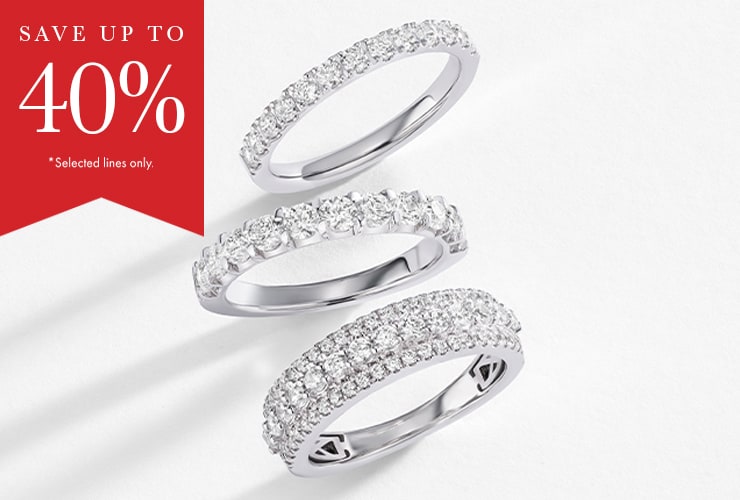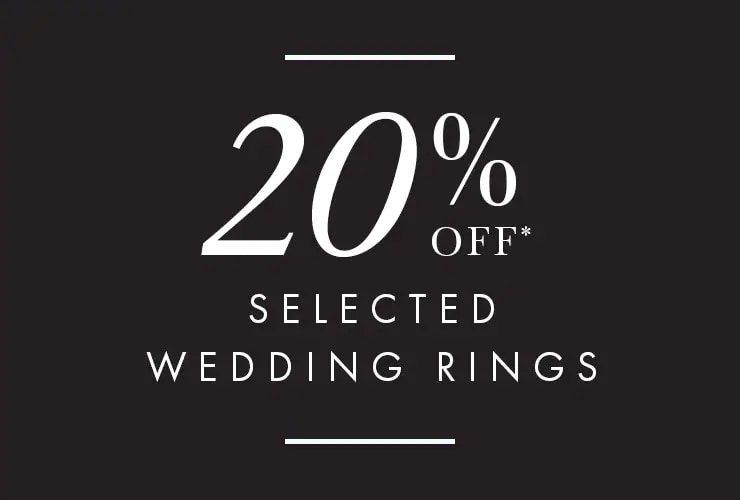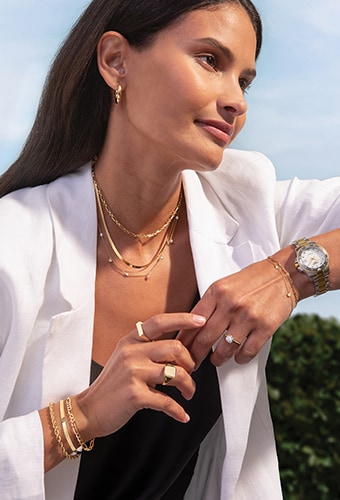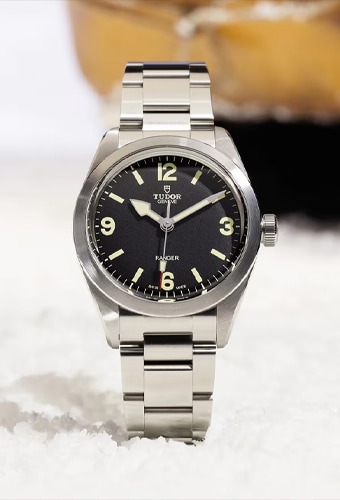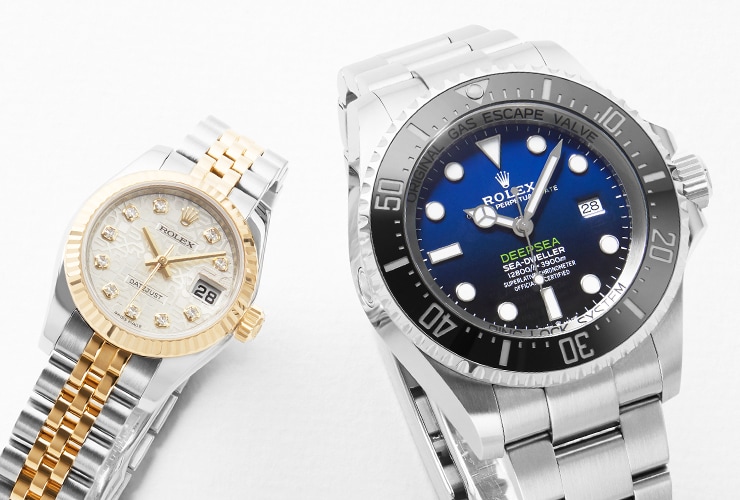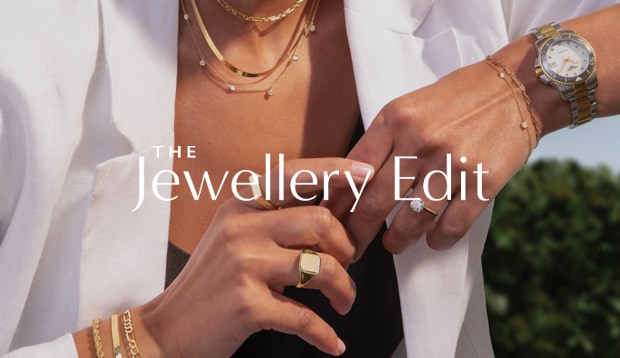-
Diamonds
By Category
-
Engagement
By Category
-
Weddings
Featured
- Jewellery
By CategoryBy Metal TypeBy GemstoneBy BrandBy Edit- Watches
By CategoryBy CollectionBy Luxury BrandBy Designer Brand- Rolex
- Gifts
By PriceBy Popular Brand- Brands
Brands A-Z- Pre-Owned
- Sale
Sale JewellerySale WatchesBy Price- Sell Your Watch
Sell your watchWe will expertly assess your watch and offer you
a competitive and accurate valuation for the
watch you wish to sell to us.Free Instant Valuation
Drop off at any Showroom
Unrivalled Knowledge & Expertise- Editorial
- Jewellery
- Shop by Category
- Diamonds
- Engagement Rings
- Weddings
-
Jewellery
- Back
- By Category
- By Metal Type
- By Gemstone
-
By Brand
- Back
- 886 by The Royal Mint
- Bijoux Birks
- BOSS
- Calvin Klein
- Chopard
- Emporio Armani
- FOPE
- Georg Jensen
- Goldsmiths
- Gucci
- Jenny Packham
- Kiki McDonough
- Lauren By Ralph Lauren
- Mappin & Webb
- MARIA TASH
- Messika
- Michael Kors
- Olivia Burton
- Roberto Coin
- Skagen
- Susan Caplan
- SUZANNE KALAN
- SWAROVSKI
- Ted Baker
- THOMAS SABO
- Tommy Hilfiger
- By Edit
- Jewellery Home
- Shop All Jewellery
-
Watches
- Back
- By Category
- By Collection
-
By Luxury Brand
- Back
- Rolex
- BALL
- Bamford
- Baume & Mercier
- Breitling
- Bremont
- Cartier
- CHANEL
- Chopard
- DOXA
- Frederique Constant
- Girard-Perregaux
- Glashütte Original
- Grand Seiko
- Gucci
- Hublot
- ID Genève
- IWC Schaffhausen
- Junghans
- Longines
- MeisterSinger
- Montblanc
- NOMOS Glashütte
- NORQAIN
- OMEGA
- Oris
- Panerai
- Piaget
- Rado
- RAYMOND WEIL
- TAG Heuer
- TUDOR
- Ulysse Nardin
- ZENITH
- By Designer Brand
- Shop All Watches
- Watches Home
- Calibre - Watch News & Inspiration
- Rolex
- Gifts
-
Brands
- Back
-
Watch Brands
- Back
- Rolex
- Accurist
- BALL
- Baume & Mercier
- BOSS
- Breitling
- Bremont
- BVLGARI
- Cartier
- Certina
- CHANEL
- Chopard
- Citizen
- DOXA
- Duckworth Prestex
- Elliot Brown
- Emporio Armani
- Fendi
- Frederique Constant
- Garmin
- Girard-Perregaux
- Glashütte Original
- Grand Seiko
- Gucci
- Hamilton
- Hublot
- ID Genève
- IKEPOD
- IWC Schaffhausen
- Jacob & Co
- Junghans
- Longines
- Louis Erard
- MeisterSinger
- Montblanc
- NOMOS Glashütte
- NORQAIN
- OMEGA
- Oris
- Panerai
- Piaget
- QLOCKTWO
- Rado
- RAYMOND WEIL
- Scatola del Tempo
- Seiko
- Swiss Capsule
- TAG Heuer
- Tissot
- TUDOR
- Ulysse Nardin
- Vivienne Westwood
- William Wood Watches
- WOLF
- ZENITH
-
Jewellery Brands
- Back
- 886 by The Royal Mint
- Bijoux Birks
- BOSS
- Calvin Klein
- Chopard
- Emporio Armani
- Encelade 1789
- FOPE
- Georg Jensen
- Goldsmiths
- Gucci
- Jenny Packham
- Kiki McDonough
- Lauren By Ralph Lauren
- MARIA TASH
- Messika
- Michael Kors
- Olivia Burton
- Roberto Coin
- Skagen
- Susan Caplan
- SUZANNE KALAN
- SWAROVSKI
- Ted Baker
- THOMAS SABO
- Tommy Hilfiger
- View All Brands
-
Pre-Owned
- Back
- By Category
-
By Brand
- Back
- Pre-Owned Rolex
- Pre-Owned Patek Philippe
- Pre-Owned TAG Heuer
- Pre-Owned Cartier
- Pre-Owned Jaeger-LeCoultre
- Pre-Owned Breitling
- Pre-Owned OMEGA
- Pre-Owned Longines
- Pre-Owned Tudor
- Pre-Owned IWC
- Pre-Owned Panerai
- Pre-Owned Blancpain
- Pre-Owned Breguet
- Pre-Owned Chopard
- Pre-Owned Rado
- Pre-Owned Vacheron Constantin
- Pre-Owned Zenith
- Shop All Pre-Owned
- Pre-Owned Home
- Sale
- Sell Your Watch
- Editorial
- My Account
- Wishlist
- Store Finder
- Book an Appointment
- Help & Support
Goldsmiths Guide to The Four C's
Diamond Guide
- Home
- Goldsmith Guides
- Diamond Guide
As an engagement ring or wedding band is an investment, it's important to be sure that you have the highest quality of diamond to suit your needs.
The Four C's is the term given to help you understand the quality of the diamonds in an engagement ring or wedding bands.

Colour
Colour of a diamond helps determine the cost of the ring it is set in. With the highest quality diamond being colourless, graded D on a scale D - Z, colourless diamonds are highly sought after. There are shades of near colourless with a slight yellow or brown hue that are still considered good quality diamonds, though as they are not colourless, this is reflected in the overall cost of the ring.
A recent trend has seen coloured diamonds being the stone of choice, adding variety and modernising a classic engagement ring. Coloured diamonds can be found in a wide variety of shades: blue diamond, pink diamond, yellow diamond, grey diamond.
Clarity
Clarity outlines the number of flaws and imperfections of a diamond. While it is natural for most diamonds to contain some inclusions, most are invisible to the eye. Our aim at Goldsmiths is to showcase rings with minimal inclusions and to ensure the price fairly reflects the number of inclusions it contains. To help with this, we offer a chart to help you understand the grade of clarity when viewing our engagement rings online and in our showrooms.

Carat
Carat is the measurement of weight given to a diamond, in similar way a bag of sugar may weigh 1kg or 500g. The heavier the diamond the most valuable it is, as it is most common to source stones the smaller their size. The carat of the ring combines all matching stones in that ring, so a diamond trilogy ring carat will be the sum of all three diamonds.
Cut
Cut: describes the shape of the diamond as crafted by a specialist diamond cutter. It is shaped symmetrically, cutting lines and angles into the ring that showcase the light, and beauty of the diamond. Often a diamond of a lower carat can be crafted with an exceptional cut to maximise the brilliance of the stone.
Some of the types of the diamond cuts are round brilliant cut, princess cut,emerald cut, oval cut and cushion cut.
Certification
Some diamonds carry a certification that includes an analysis of their dimensions, clarity, colour, polish, symmetry and other characteristics. The certificates serve as proof that they have undergone an unbiased, professional examination, and that they can be traced back to suppliers who comply with the UN-mandated Kimberley Process.
Daily Care of Your Diamonds
Diamonds may be the hardest substance known to man, but they can still get scratched and damage. Here are some tips on how you can make your diamond really sparkle:
- Avoid contact with chlorine bleach, which can pit or discolour the mounting.
- Avoid wearing your diamond while doing heavy work – diamonds are hard, but can still be chipped by a hard blow against the grain.
- Diamonds can scratch each other, as well as other stones and metals, so keep them separate from your other jewellery to avoid damage.
- To clean your diamonds, brush them gently with a clean toothbrush in a bowl, of warm, liquid detergent suds. Then rinse through a wire strainer before patting dry with a soft, lint-free cloth.
Ask Us Anything
We’re always happy to answer questions you have about your diamonds, jewellery and watches. For advice on care, cleaning, valuation, servicing and repairs use our showroom locator to contact your nearest showroom or make an appointment.
Alternatively, contact our client support team.
© 2023 Goldsmiths
Goldsmiths is a trading name of Watches of Switzerland Company Limited. Registered Office: Aurum House, 2 Elland Road, Braunstone, Leicester, LE3 1TT, Registered in England and Wales, Company number 00146087. Registered VAT Number 834 8634 04. Watches of Switzerland Company Limited acts as a broker and not a lender and offers finance from Secured Trust Bank PLC trading as V12 Retail Finance and PayPal (Europe) S.à r.l. et Cie, S.C.A., 22-24 Boulevard Royal L-2449, Luxembourg trading as PayPal Credit. Watches of Switzerland Company Limited is authorised and regulated by the Finance Conduct Authority. Our registration number is 308710. Credit provided is subject to age and status, minimum spend applies. Terms and Conditions apply. UK residents only. We may receive a commission if your application is successful, and the amount may vary depending on the product chosen and the amount of credit taken out. Not all products are regulated by the Financial Conduct Authority and FOS protection will not be extended to unregulated agreements.
*Next day delivery available on most items. See product pages for more information.

